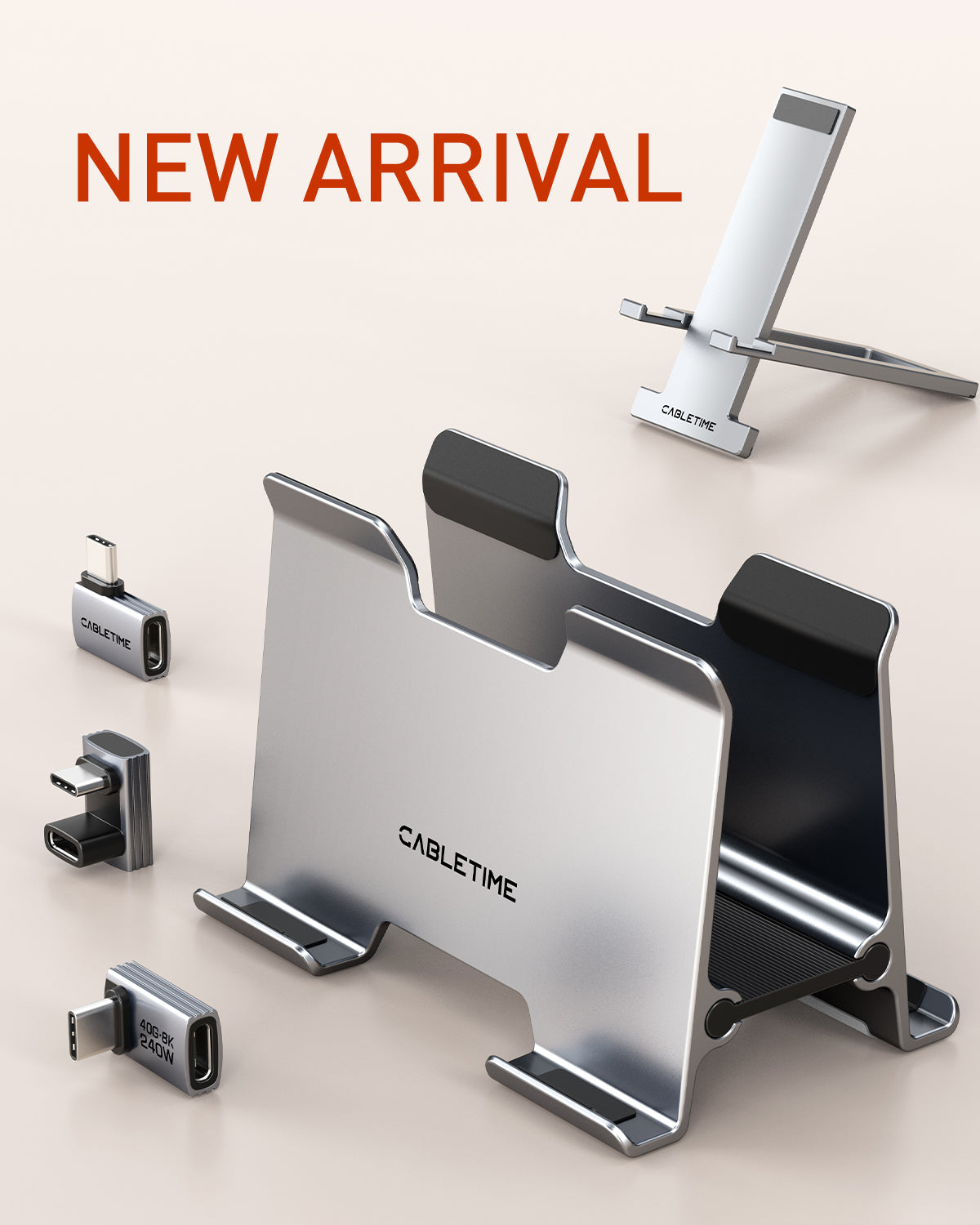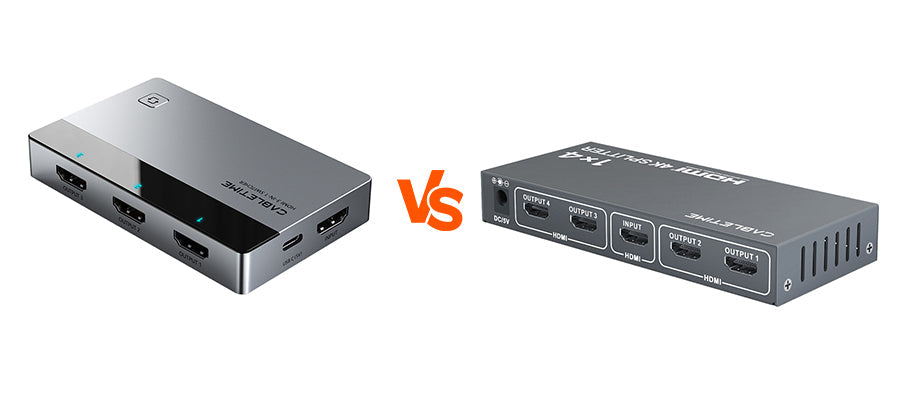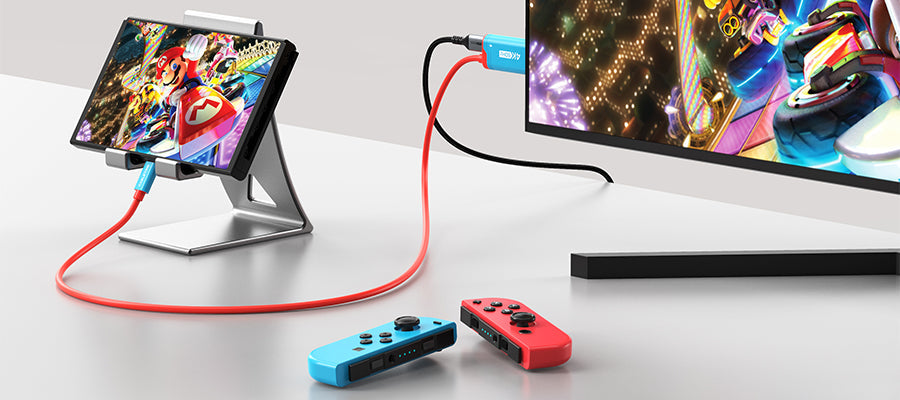Forvirret mellem en HDMI-switcher og en HDMI-splitter? Du er ikke alene. Mange brugere spekulerer på, hvilken enhed der passer til deres opsætning – især når de jonglerer med flere skærme, kilder eller AV-systemer. Denne guide vil afklare deres forskelle, vise reelle brugsscenarier og hjælpe dig med at vælge den rigtige Cabletime HDMI-løsning.

Hvad er en HDMI-switcher?
En HDMI-switcher Forbinder flere HDMI-indgangskilder – såsom spillekonsoller, Blu-ray-afspillere, medieenheder eller bærbare computere – til en enkelt HDMI-udgang (som et tv eller en projektor). Det giver dig mulighed for at skifte mellem enheder uden besværet med at skulle skifte kabler gentagne gange.

Sådan fungerer det
- Flere HDMI-indgange kan tilsluttes switcheren
- Én HDMI-udgang tilsluttes din skærm
- Skift kan være manuelt eller fjernbetjent
Typiske anvendelsesscenarier:
- Hjemmebiograf: Skift mellem spillekonsoller, set-top-bokse og streamingenheder
- Konferencerum: Del skærme fra flere bærbare computere eller mobile enheder på en central skærm
- Indholdsskabere: Skift hurtigt mellem videoinputkilder (kameraer, medieafspillere)
Eksempel: A Cabletime 3-i-1 HDMI-switch giver brugerne mulighed for at tilslutte en PlayStation, kabelboks og bærbar computer til et enkelt tv ved hjælp af en knap eller fjernbetjening til at vælge den aktive indgang.















Efterlad en kommentar
Denne side er beskyttet af hCaptcha, og hCaptchas Politik om beskyttelse af persondata og Servicevilkår er gældende.